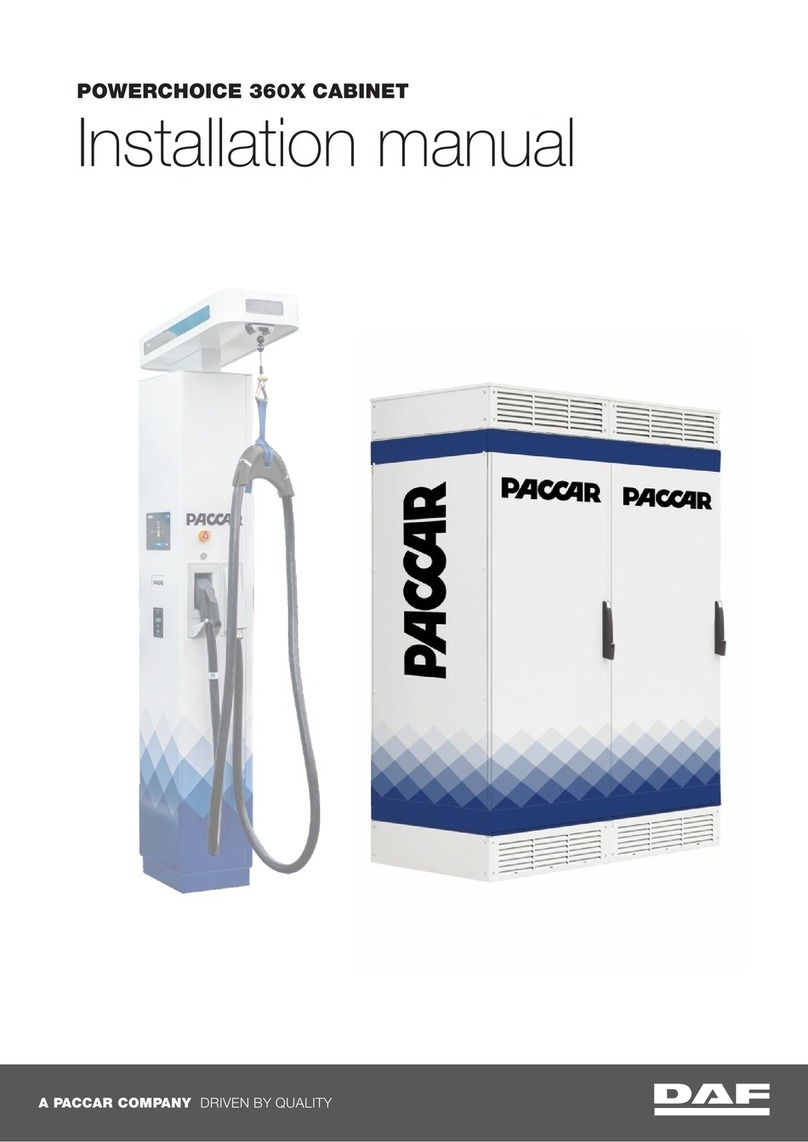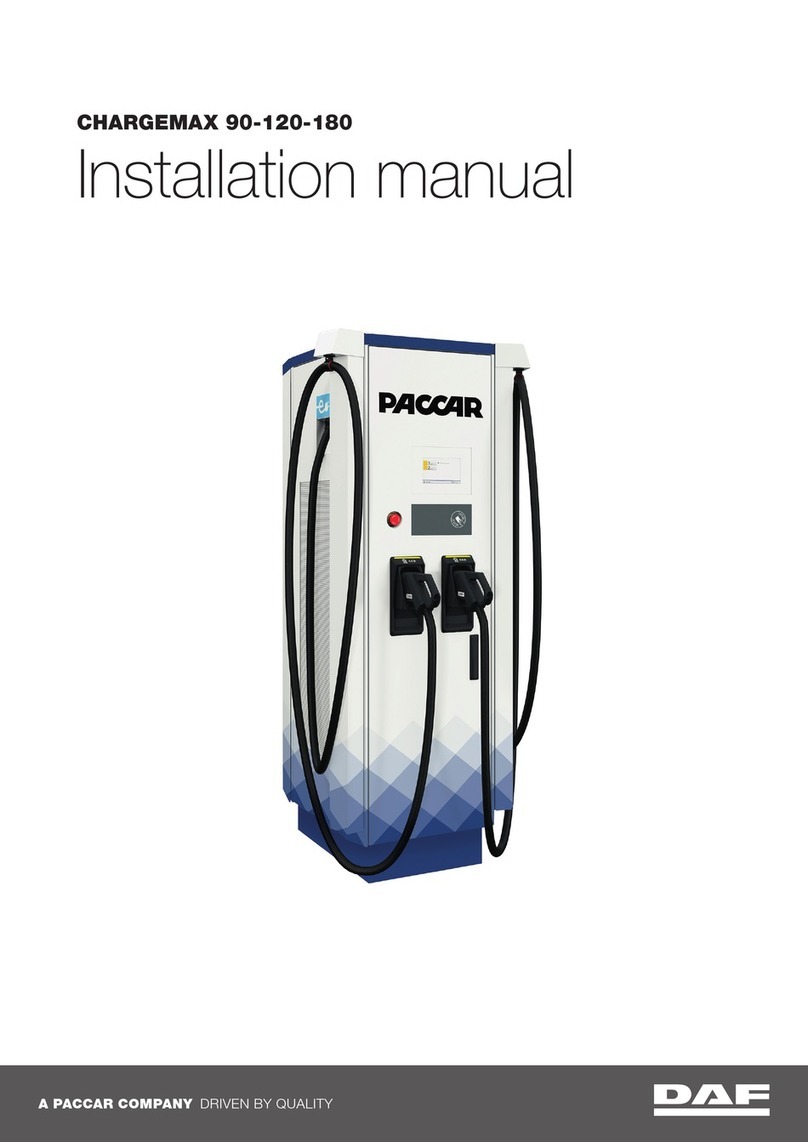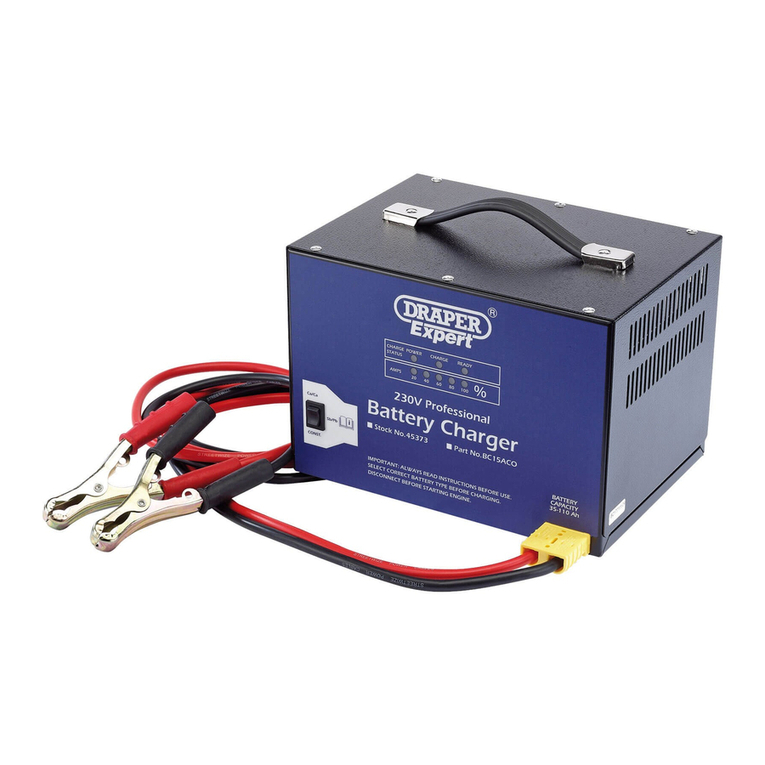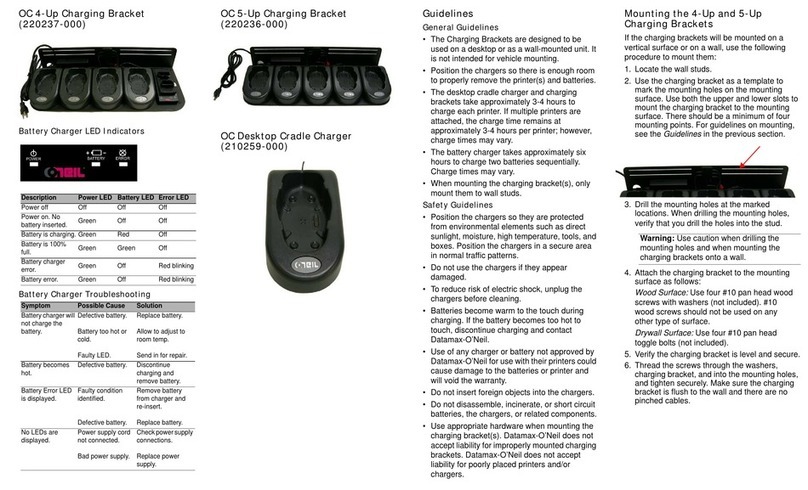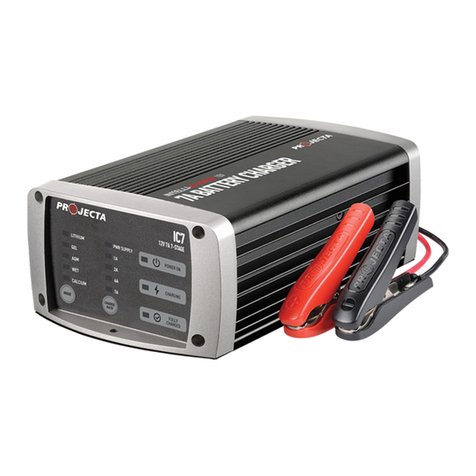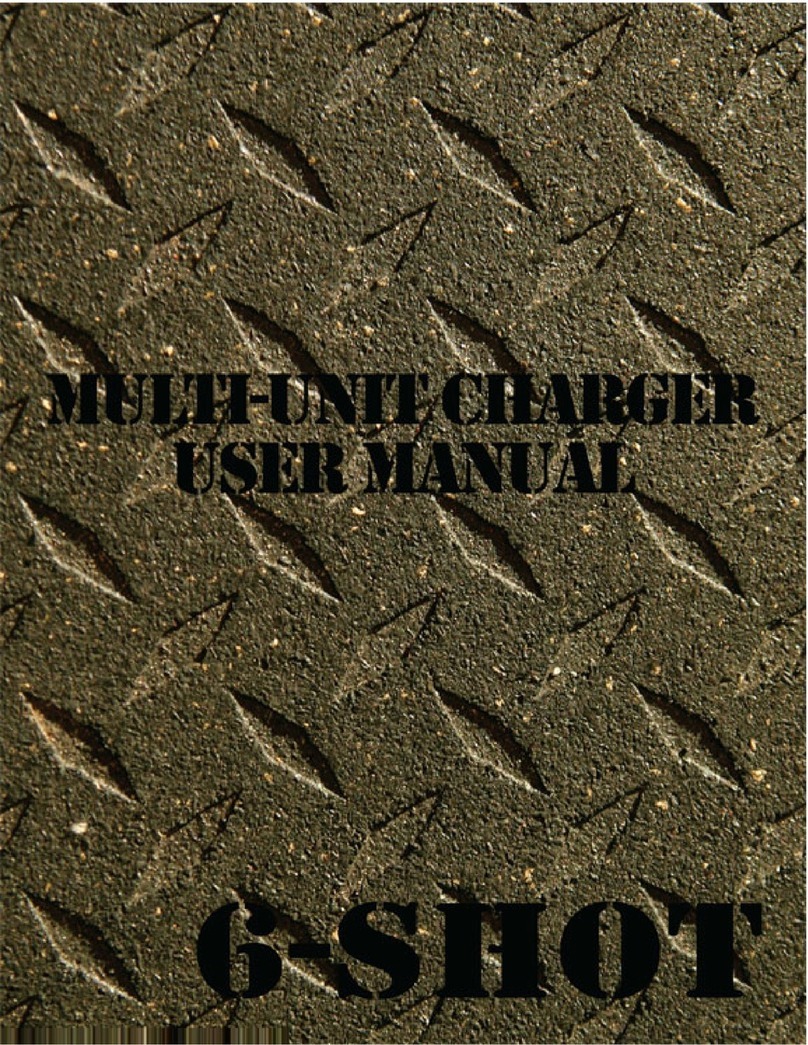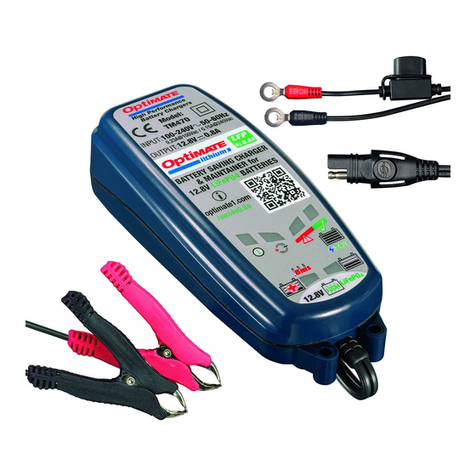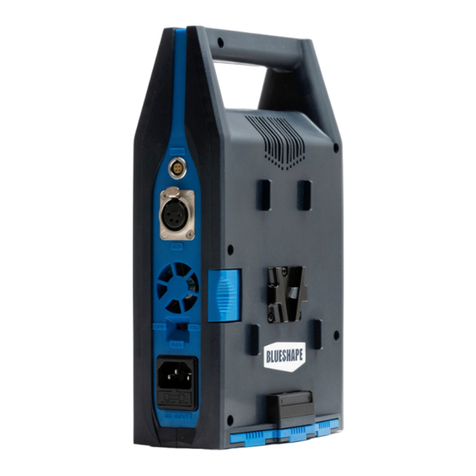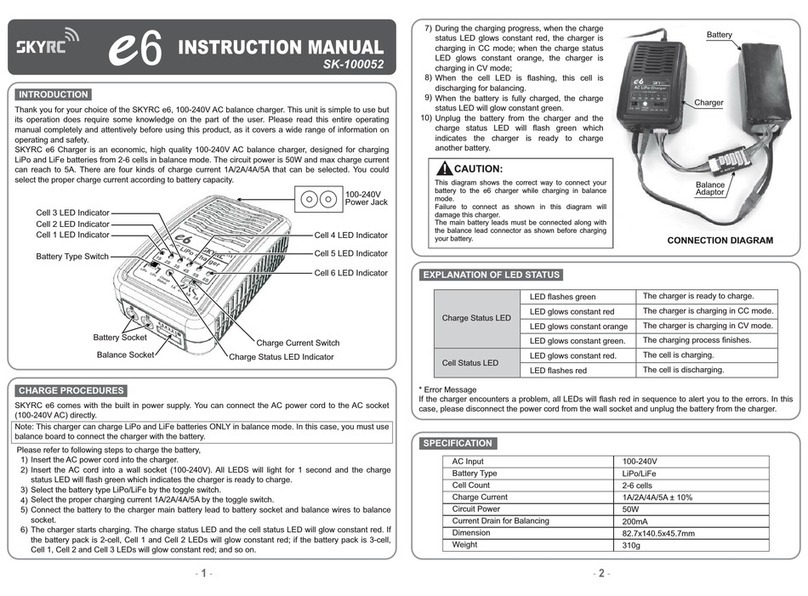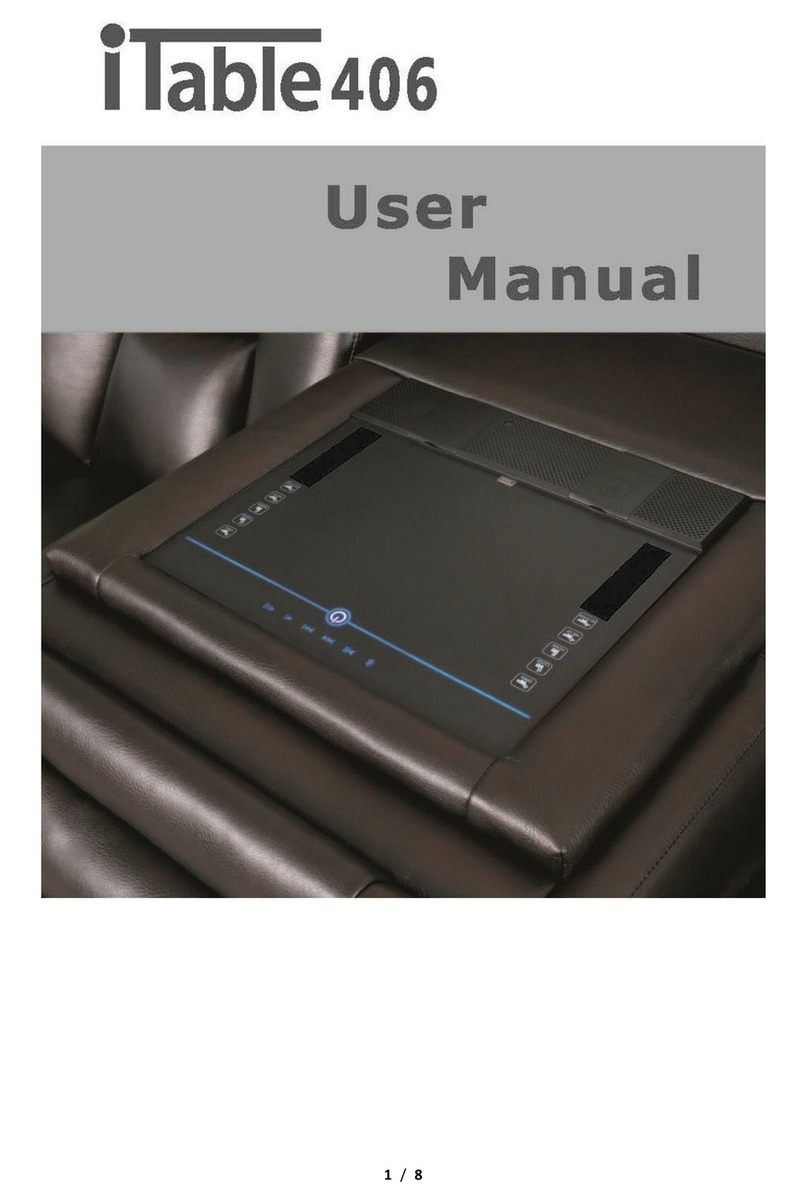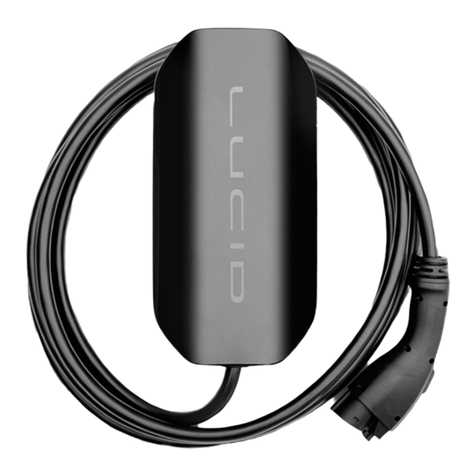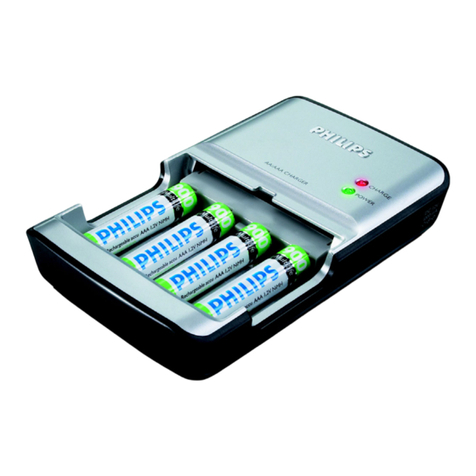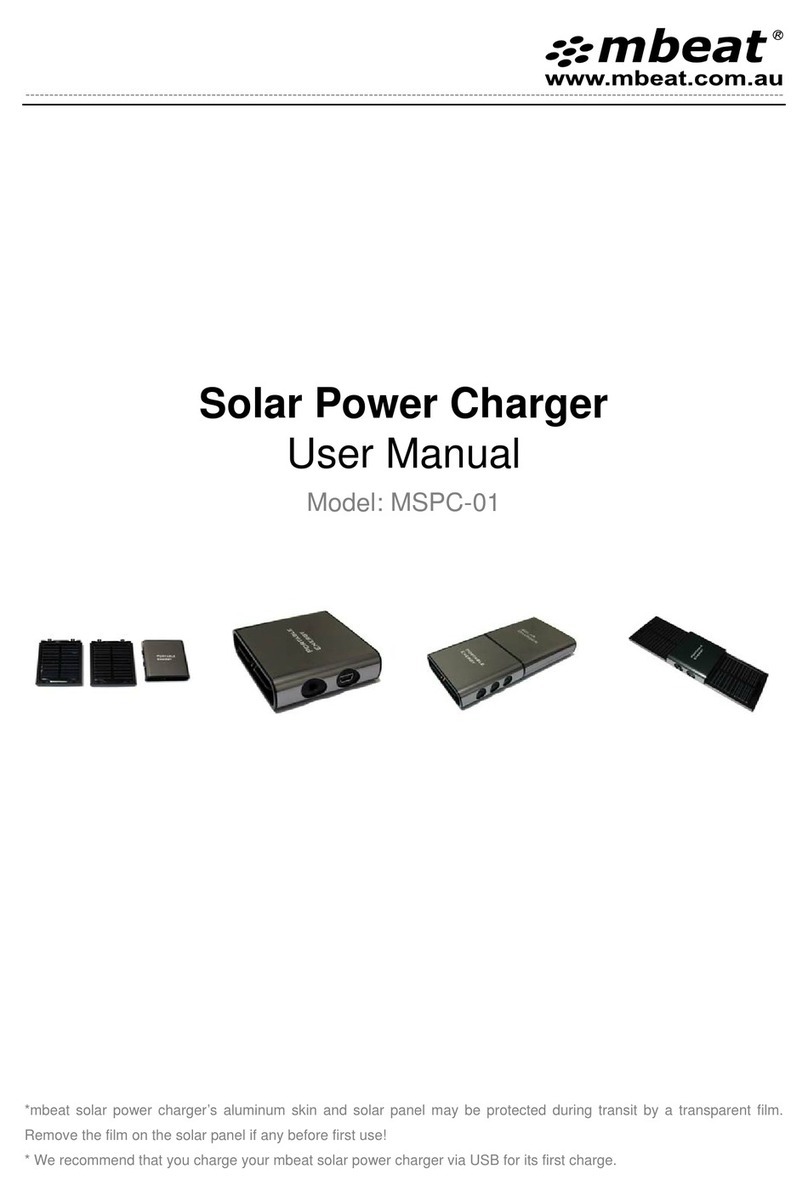Paccar PACCHARGE AC20 User manual

A PACCAR COMPANY DRIVEN BY QUALITY
PACCHARGE AC20
User manual

This document contains information about one or more
PACCAR/ABB products and may include a description
of or a reference to one or more standards that may
be generally relevant to the products.
The presence of any such description of a standard or
reference to a standard is not a representation that all of
the PACCAR products referenced in this document support
all of the features of the described or referenced standard.
In order to determine the specific features supported by a
particular PACCAR product, the reader should consult the
product specifications for that particular product.
PACCAR/ABB may have one or more patents or pending
patent and registered trademarks applications protecting
the intellectual property described in this document.
The information in this document is subject to change
without notice and should not be construed as a
commitment by PACCAR. PACCAR assumes no
responsibility for any errors that may appear in this
document.
In no event shall PACCAR be liable for direct, indirect,
special, incidental or consequential damages of any nature
or kind arising from the use of this document, nor shall
PACCAR be liable for incidental or consequential damages
arising from use of any software or hardware described
in this document.
This document and parts thereof must not be reproduced
or copied without written permission from PACCAR, and
the contents thereof must not be imparted to a third party
nor used for any unauthorized purpose.
Copyrights
All rights to copyrights, registered trademarks, and
trademarks reside with their respective owners.
Copyright © 2021 PACCAR/ABB
2
Notice

Contents
1 About this document 6
1.1 Function of this document 6
1.2 Target group 6
1.3 Revision history 6
1.4 Language 6
1.5 Illustrations 6
1.6 Units of measurement 6
1.7 Typographical conventions 6
1.8 How to use this document 6
1.9 General symbols and signal words 7
1.10 Special symbols for warnings and dangers 8
1.11 Related documents 8
1.12 Manufacturer and contact data 8
1.13 Abbreviations 9
1.14 Terminology 9
1.15 Orientation agreements 10
2 Description 11
2.1 Short description 11
2.2 Intended use 11
2.3 Product label (IEC portfolio) 12
2.4 Product label (UL portfolio) 13
2.5 Overview 14
2.5.1 Overview of the system 14
2.5.2 Overview of the EVSE, outside 15
2.5.3 Overview of the EVSE, inside (CE model) 16
2.5.4 Overview of the EVSE, inside (MID model) 17
2.6 Options 18
2.6.1 Display 18
2.6.2 EV charge cable, Type 2 18
2.6.3 Socket, Type 2 18
2.6.4 Load management 19
2.7 Control elements 19
2.7.1 LED indicators 19
2.8 Description of the ChargerSync app for the EVSE 21
2.8.1 General description of the lay-out of the ChargerSync app 21
2.8.2 General description of the buttons and colors 22
2.8.3 Overview of the menus 23
2.8.4 Errors 23

2.9 Description of the display screens (option) 23
2.9.1 Boot screen 23
2.9.2 Standby/Idle screen 24
2.9.3 Authorization screen 25
2.9.4 Preparing to charge screen 25
2.9.5 Charging screen 26
2.9.6 Charging completed screen 26
2.9.7 Fault detected display messages 27
3 Safety 28
3.1 Liability 29 28
3.2 Responsibilities for the owner 28
3.3 Personal protective equipment 29
3.4 FCC compliance statement 29
3.5 Industry Canada compliance statement 30
3.6 General safety instructions 30
3.7 Safety instructions for use 30
3.8 Safety instructions during cleaning or maintenance 30
3.9 Signs on the EVSE 31
3.10 Discard the EVSE or parts of the EVSE 31
3.11 Special safety instructions (UL portfolio) 32
3.11.1 Important safety instructions (UL portfolio) 32
4 Operation 33
4.1 Prepare before use 33
4.2 Energize the EVSE 33
4.3 Connect the EVSE with the ChargerSync app 33
4.4 Start a charge session 34
4.4.1 EVSE with an EV charge cable 34
4.4.2 EVSE with a socket 34
4.5 Wake up the EV when it is unavailable 34
4.5.1 Wake up the EV (EVSE without display) 34
4.5.2 Wake up the EV (EVSE with display) 35
4.6 Stop a charge session 35
4.6.1 EVSE with an EV charge cable 35
4.6.2 EVSE with a socket 36
4.7 Wrap the EV charge cable around the enclosure 36
5 Maintenance and cleaning 37
5.1 Maintenance schedule 37
5.2 Clean the cabinet 37
5.3 Do a check on the cabinet 38
6 Troubleshooting 39
6.1 Troubleshooting procedure 39
6.2 Troubleshooting table (IEC portfolio) 39
6.4 De-energize the EVSE 41

7 Technical data 42
7.1 EVSE Type 42
7.2 General specifications 43
7.3 Meter specifications for a MID certified EVSE (IEC portfolio) 44
7.4 Ambient conditions 44
7.5 Noise level 44
7.6 Dimensions 45
7.6.1 AC input with socket, cable Type 2 45
7.6.2 AC input with EV charge cable 46
7.6.3 Space requirements for installation 46
7.7 AC input specifications 47
7.7.1 General specifications 47
7.7.2 AC input specifications (IEC portfolio) 47
7.8 AC output specifications 48
7.8.1 AC output specifications (IEC portfolio) 48
7.9 Cleaning specifications 48

6
1. About this document
1.1 Function of this document
The document is only applicable for this EVSE (Terra AC), including the variants and options listed in
section 7.1.
The document gives the information that is necessary to do these tasks:
• Use the EVSE
• Do basic maintenance tasks
1.2 Target group
The document is intended for the owner of the EVSE.
For a description of the responsibilities of the owner, refer to section 3.2.
1.3 Revision history
Version Date Description
001 March 2020 Initial version
002 April 2021 Complete document overhaul
003 May 2022 PACCAR Version Update
1.4 Language
The original instructions of this document are in English (EN-US). All other language versions are
translations of the original instructions.
1.5 Illustrations
It is not always possible to show the configuration of your EVSE. The illustrations in this document show
a typical setup. They are for instruction and description only.
1.6 Units of measurement
SI units of measurement (metric system) are used. If necessary, the document shows other units between
parentheses () or in separate columns in tables.
1.7 Typographical conventions
The lists and steps in procedures have numbers (123) or letters (abc) if the sequence is important.
1.8 How to use this document
1. Make sure that you know the structure and contents of this document.
2. Read the safety chapter and make sure that you know all the instructions.
3. Do the steps in the procedures fully and in the correct sequence.
4. Keep the document in a safe location that you can easily access. This document is a part of the
EVSE.

7
1.9 Allgemeine Symbole und Signalwörter
Signal word Description Symbol
Danger If you do not obey the instruction, this can cause injury or death. Refer to
section 1.10.
Warning If you do not obey the instruction, this can cause injury. Refer to
section 1.10.
Caution If you do not obey the instruction, this can cause damage to the
EVSE or to property.
Note A note gives more data, to make it easier to do the steps, for
example.
-Information about the condition of the EVSE before you start the
procedure.
-Requirements for personnel for a procedure.
-General safety instructions for a procedure.
-Information about spare parts that are necessary for a procedure.
-Information about support equipment that is necessary for a
procedure.
-Information about supplies (consumables) that are necessary for
aprocedure.
-Make sure that the power supply to the EVSE is disconnected.
-Electrotechnical expertise is required, according to the local rules.
-Alternating current supply
Note: It is possible that not all symbols or signal words are present in this document.

8
1.10 Special symbols for warnings and dangers
Symbol Risk type
General risk
Hazardous voltage that gives risk of electrocution
Risk of pinching or crushing of body parts
Rotating parts that can cause a risk of entrapment
Note: It is possible that not all symbols are present in this document.
1.11 Related documents
Document name Target group
Product data sheet All target groups
Installation manual Qualified installation engineer
User manual Owner
Service manual Qualified service engineer
Declaration of conformity (CE) All target groups
1.12 Manufacturer and contact data
Manufacturer
ABB EV Infrastructure
George Hintzenweg 81
3068 AX Rotterdam
The Netherlands
Contact data
ABB EV Infrastructure in your country can give you support on the EVSE. You can find the contact data
here: https://new.abb.com/ev-charging

9
1.13 Abbreviations
Abbreviation Definition
AC Alternating current
CAN Controller area network
CPU Central processing unit
DC Direct current
EMC Electromagnetic compatibility
EV Electric vehicle
EVSE Electric vehicle supply equipment
MiD Measuring Instruments Directive
NFC Near field communication
NoBo Notified body
OCPP Open charge point protocol
PE Protective earth
PPE Personal protective equipment
RFID Radio-frequency identification
Note: It is possible that not all abbreviations are present in this document.
1.14 Terminology
Term Definition
Network operating center of the
manufacturer
Facility of the manufacturer to do a remote check on the correct
operation of the EVSE
Cabinet Enclosure of the EVSE, including the components on the inside
CHAdeMO Japanese DC fast charging method for electric vehicles
Contractor Third party that the owner or site operator hires to do engineering,
civil and electrical installation work
Grid provider Company that is responsible for the transport and distribution of
electricity
Local rules All rules that apply to the EVSE during the entire lifecycle of the
EVSE. The local rules also include the national laws and
regulations.
Open charge point protocol Open standard for communication with charge stations
Owner Legal owner of the EVSE
Site operator Entity that is responsible for the day-to-day control of the EVSE.
The site operator does not have to be the owner.
User Owner of an EV, who uses the EVSE to charge the EV
Note: It is possible that not all terms are present in this document.

10
1.15 Orientation agreements
A Front side: face forward to the EVSE during normal use X X-direction (positive is to the right)
B Left side Y Y-direction (positive is rearward)
C Right side Z Z-direction (positive is upward)
D Rear side
D
C
B
X
Z
Y
A

11
2. Description
2.1 Short description
The EVSE (Terra AC) is an AC charging station that you can use to supply electricity to an EV. The Terra
AC offers tailor-made, intelligent and network charging solutions for your company or home. The EVSE
can connect to the internet via GSM, WiFi or LAN.
2.2 Intended use
The EVSE is intended for the AC charging of EVs. The EVSE is intended for indoor or outdoor use.
The technical data of the EVSE must comply with the properties of the electrical grid, the ambient
conditions and the EV. Refer to chapter 7.
Only use the EVSE with accessories that the manufacturer provides or that obey the local rules.
The EVSE AC input is intended for a hardwired installation that complies with the applicable national
regulations.
Danger:
General risk
• If you use the EVSE in any other way than described in the related documents, you can
cause death, injury and damage to property.
• Use the EVSE only as intended.

12
2.3 Product label (IEC portfolio)
A Brand
B Barcode with the serial number
C Barcode with the part number of the EVSE
D Product model number
E MID accuracy class
F EVSE rating
G Mass of the EVSE
H Address of the manufacturer
Note: The data in the illustration is only an example. Find the product label on your EVSE to
see the applicable data. Refer to section 2.5.2.
xxxxxxxxxxxxxx
xxxxxx-xxx-xxxx-xxxxx
IPXX
Certi cation Number: xxx-XXXXXXX XXXXX
SN:xxxxxx-xxx-xxxx-xxxxx
XXX
PN:xxxxxxxxxx
Xxxxxxxxxx
xxx xxx xxxx xxxxxxxx xxx
xxx xxx xxxx xxxxxxxx xxx
Xxxx xxx xxxxxxxxx xxx
Xxxx x xxxxx xxxxxx
XXXXX XXXXX XX
xxxxxxxxx xxx xx xxx,
xxxx XX xxxxxxxxx,
xxx Xxxxxxxxxxx
xxxx xxx xxxxxwww.abb.com
Weight xxxKg
xxxx
xxx x x xx xxx
A
B
C
D
E
F
G
I
J
K
L
M
N
O
H
I CE mark
J MID mark and notified body number
K MID certificate number
L MID software checksum
M MID FW version
N Ingress protection rating
O Reference to the manual

13
2.4 Product label (UL portfolio)
A Serial number
B Part number of the EVSE
C Product model number
D Barcode with the serial number of the EVSE
Note: The data in the illustration is only an example. Find the product label on your EVSE to
see the applicable data. Refer to section 2.5.2.
SN: TACW7-[L]-WWYY-zxxxx
PN: XXXXXXXXXX
MODEL: Terra AC WX-P8-XX-XXX-X
TAC Wx-[L]-WWYY-zxxxx
XXXX XXXXXX
For use with electric vehicles
Pour utilisation avec des véhicules électriques
240V ~ / 60Hz 32A TYPE 3 -30ºC~50ºC
Ventilation Not Required Aucune ventilation requise
Raintight Étanche à la pluie Weight: 7.0kg
Dusttight Étanche à la poussière Poids: 7.0kg
A
B
C
D
E
F
G
H
E Barcode with the part number of the EVSE
F Power rating of the EVSE G Ambient
temperature
H Mass of the EVSE

14
2.5 Overview
2.5.1 Overview of the system
A EVSE
B AC grid input
C EV
D Parking space
Part Function
EVSE Refer to section 2.2.
Structure To install the EVSE on and to keep the EVSE in position.
AC grid input To supply the electricity to the EVSE
EV charge cable To conduct the current from the EVSE to the EV
EV The EV of which the batteries need to be charged
Parking space Location for the EV during the charge session
RFID card or smartphone To authorize the user to use the EVSE
E
A B
CD
G
F
E RFID card or smartphone
F Structure to install the EVSE on
G EV charge cable

15
2.5.2 Overview of the EVSE, outside
Note: The illustration shows the EVSE model without a display.
A Connection for the EV charge cable
B Openings for the smart meter connections
C Opening for the Ethernet cable
D Opening for the AC input cable
E LED indicators
Part Function
Connection for the EV charge
cable
To connect the EV charge cable
Openings Openings for the cables that go into the EVSE
LED indicators To show the status of the EVSE and the charge session. Refer to
section 2.7.1.
Cabinet cover To prevent a user to access the installation and maintenance
parts of the EVSE
Enclosure To reduce the accessibillity of unqualified persons to the inside of
the EVSE
RFID reader To authorize the start or stop of a charging session with an RFID
card
Product label To show the identification data of the EVSE. Refer to section 2.3.
A
F
E
H
I
G
B C D
F Cabinet cover
G Enclosure
H RFID reader
I Product label

16
2.5.3 Overview of the EVSE, inside (CE model)
A Maintenance cover
B Primary Ethernet connection
C Socket for a Nano-M2M SIM card
D Smart meter connection
Part Function
Maintenance cover To prevent access to the electrical components of the EVSE
Primary Ethernet connection To connect the Ethernet cable
Socket for a Nano-M2M SIM
card
To connect the EVSE to the internet 4G
Smart meter connection To connect the cables for Modbus RTU - RS485
Terminal block for dry contacts
input and output
Not used
Terminal block for the AC input To connect the AC input cable from the grid
Terminal block for the EV charge
cable
To connect the EV charge cable or the socket outlet
A B C
E
D
F
G
E Terminal block for dry contacts input and output
F Terminal block for the AC input
G Terminal block for the EV charge cable or the socket
16

2.5.4 Overview of the EVSE, inside (MID model)
A Maintenance cover
B Primary Ethernet connection
C Electrical pulse connector
D Socket for a Nano-M2M SIM card
E Terminal block for the AC input
Part Function
Maintenance cover To prevent access to the electrical components of the EVSE
Primary Ethernet connection To connect the Ethernet cable
Electrical pulse connector Use for manufacturer only. Do not change or connect cables to
this input yourself.
Socket for a Nano-M2M SIM
card
To connect the EVSE to the internet 4G
Terminal block for the AC input To connect the AC input cable from the grid
Secondary Ethernet connection To use one Ethernet cable connection for multiple EVSEs.
Thereis no communication between the EVSEs.
Smart meter connection To connect the cables for Modbus RTU - RS485
Terminal block for dry contacts
input and output
Not used
Terminal block for the EV charge
cable
To connect the EV charge cable or the socket outlet
A B C D
E
G
F
H
I
F Secondary Ethernet connection
G Smart meter connection
H Terminal block for dry contacts input and output
I Terminal block for the EV charge cable or the socket
17

2.6 Options
2.6.1 Display
A Display
For more data about the display, refer to section 2.9.
2.6.2 EV charge cable, Type 2
2.6.3 Socket, Type 2
A Socket
The socket for an EV charge cable Type 2 is available with or without a shutter.
A
A
18

2.6.4 Load management
Load management makes sure that the available electrical capacity of the building or home is not
exceeded. A number of devices share a grid connection, that has a maximum capacity. The total power
demand of the devices that use the grid connection must not exceed the grid capacity.
The load management feature prevents that the system exceeds the grid capacity and prevents damage
of the fuses. At times when the current demand is high, the EVSE decreases the output of current.
Thecurrent will increase again when there is availability on the grid.
Also, the load management feature makes sure that the available load is optimally shared.
2.7 Control elements
2.7.1 LED indicators
A Error LED
B Charging LED
C Cable and EV detection, and EV authorization LED
A
B
C
D
E
D Internet connection LED
E EVSE on/off LED
19

Table 1: Error LED
Status of the LED Status of the EVSE
On Error
Off No error
Table 2: Charging LED
Status of the LED Status of the EVSE
On EV is fully charged or has stopped charging
Off Not charging
Flashing Charging
Table 3: Cable and EV detection, and EV authorization LED
Status of the LED Status of the EVSE
On An EV is connected. The connection is authorized.
Off No EV connected
Flashing A EV is connected, waiting for authorization
Table 4: Internet connection LED
Status of the LED Status of the EVSE
On Connected to the internet
Off Not connected to the internet
Flashing In progress to establish internet connection
Table 5: EVSE on/off LED
Status of the LED Status of the EVSE
On The EVSE is on
Off The EVSE is off
Flashing The EVSE is in setup
20
Other manuals for PACCHARGE AC20
1
Table of contents
Other Paccar Batteries Charger manuals
